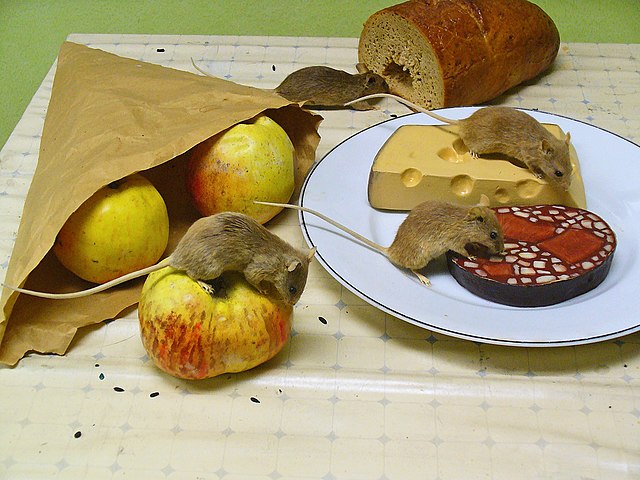 We may never really know where Pied Piper of Hamelin lured the mice he caught to. For all you know, they may have hitched a ride as stowaways on the many expeditions the Vikings made to new lands in Newfoundland, Iceland, and Greenland?
We may never really know where Pied Piper of Hamelin lured the mice he caught to. For all you know, they may have hitched a ride as stowaways on the many expeditions the Vikings made to new lands in Newfoundland, Iceland, and Greenland?
By studying the genes of tiny house mice, scientists observed that the DNA pattern found in mice from Norway, a former Viking homeland, matches the mice in northern Britain. This is despite the fact that a sea separates these different lands.
How could these little creatures have crossed a water body? Studies of modern and ancient mouse remains from sites of known Viking colonies in Greenland, Iceland and Newfoundland have the same telltale pattern. They suggest that the mice were unwittingly brought to new lands by Viking explorers.
Of Mice and Men
Vikings, the fearless seamen from Scandinavia - Denmark, Norway, and Sweden, went exploring through Europe and the North Atlantic. Some went to fight and steal treasure while others settled in new lands as farmers, craftsmen and traders.
Mice tend to prefer human company and have co-evolved to live among people for several millenniums. They are known to be hardy and invasive. Without a natural predator such as cats, they are more likely to thrive and survive. The recent findings help us gain a good perspective of human movement, colonization, and trade in the Viking era and since.
Plant invasion in Antarctica
Like the Vikings who explored new lands and brought the pesky mice along, a new invasion is currently underway, again being perpetrated by humans.
Antarctica is pretty much the last frontier for us on Earth today. Its pristine environment is playing host to an ever-increasing number of tourists and scientists.
A new study finds that visitors to the frozen continent are bringing unintended baggage – seeds of potentially invasive plants. This may not be an immediate threat in the inhospitable frigid terrain. But climate change trends suggest that Antarctica will be more hospitable to plant and animal life in the coming decades. The threat of plant invasion from preserved seeds along the western Antarctic Peninsula and in ice-free coastal areas of the continent is very real.
A study conducted in late 2007 over a few weeks, looked at the travel gear of 850 scientists, tourists, ship crew, and support staff. Vacuum cleaners picked up over 2700 seeds from equipment including outerwear, footwear, day packs, and camera bags. Many of the seeds were unknowingly carried into Antarctica. The study estimates that nearly 71,000 seeds entered Antarctica in that one season - on an average nine seeds per visitor!
Why should we be concerned? Invasive plants and animals can wipe out indigenous species, disrupt the local biodiversity, and cost countries millions of dollars to contain the damage. Now you know why authorities screen for fresh fruits or vegetables when you cross international borders.
Humans have pioneered travel into new lands. Along the way, they have also managed to permanently change the natural habitat with the unintentional movement of plants and animals.
While the study of Vikings and mice reminds us of how humans can alter new environments, it is also a sharp reminder to us to protect and preserve other natural habitats in the process of human voyaging.
Here are some tips from experts to prevent the introduction of invasive species
- Verify that the plants you are buying for your yard or garden are not invasive. Replace invasive plants in your garden with non-invasive alternatives.
- When boating, clean your boat thoroughly before transporting it to a different body of water.
- Clean your boots before you hike in a new area to get rid of hitchhiking weed seeds and pathogens.
- Don't "pack a pest" when traveling. Fruits and vegetables, plants, insects, and animals can carry pests or become invasive themselves. Clean your bags and boots after each hike, and throw out food before you travel from place to place.
- Don't release aquarium fish and plants, live bait, or other exotic animals into the wild.
- Volunteer at your local park, refuge, or other wildlife areas to help remove invasive species. Help educate others about the threat
Critical Thinking: Human exploration is unavoidable. What are some of the ways you think we can prevent the threat of invasive species overtaking natural habitats? Can you think of some natural habitats that are under threat from invasion? Share your concerns, thoughts, and suggestions on this forum.
Source: National Geographic, ScienceNow






